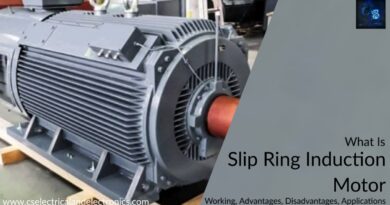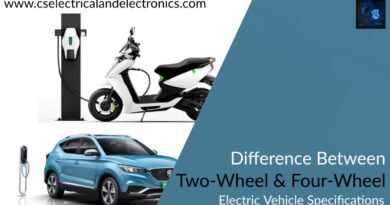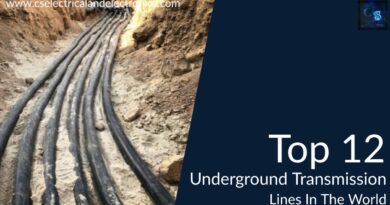Types Of Motor Used In Electric Train Or Traction, Motors In Train
Hello guys, welcome back to our blog. In this article, we will discuss the different types of motors used in electric trains or traction, motors used in a train, I will give an explanation of each motor.
If you have any electrical, electronics, and computer science doubts, then ask questions. You can also catch me on Instagram – CS Electrical & Electronics.
Also, read:
- Difference Between Three Point And Four Point Starter, DC Motor Starter.
- Difference Between BLDC And PMSM Motor, Brushless DC Motor.
- Comparison Between Indoor And Outdoor Substation, Merits And Demerits.
Types Of Motor Used In Electric Train
Electrical traction is the huge combination of electrical drives and drives are a combination of motors. The wheels that drive the traction are linked with motors hence motors used are also important for traction.
Generally, the motors used in the traction are Asynchronous motors as the torque of these motors varies because of speed variation. Asynchronous motors have an asynchronous speed which impacts the torque of the motor. The majorly used asynchronous motors in traction are,
01. DC Series Motor
DC series motor is popularly known as the high-speed dc running motor, hence the torque of the motor is very high so it can bear heavy load. Traction requires high starting torque at the initial stage which will be provided by the dc series motor because they need high starting torque to rotate the shaft. Speed control of the dc series motor is also very easy.
The torque developed in the motor is directly proportional to the armature current, thus the power input required will be very less as an increase in the load torque. This makes the series motor withstand the excess loads compared to the other motors.
DC series motor is independent of supply voltage because the change in flux is directly proportional to the armature current as well as torque so the sudden changes in supply voltage will not affect the motor.
The commutation of the dc series motor is very good until twice the full load this decreases maintenance such as the replacement of brushes. In parallel operation, the motors will share the load equally but in a series motor, the slight difference in voltage will lead to a change in the load sharing of motors. The above things made DC series motor used in the Electrical traction.
02. Linear Induction Motor
A linear induction motor is specially designed for the production of motion as a straight line. It works on the general principle of induction but the production of motion is designed to provide straight motion. These linear induction motors run on a three-phase supply and can generate high speeds. This made the linear induction motors be used in conveyors and trams.
These are generally used in the ac traction which provides the three-phase ac supply. The windings placement can provide straight motion. The speed control of the three-phase is hard but the linear induction motor speed can be controlled by the frequency control method. This makes the motor much more reliable and the initial cost is also very less.
03. Three-Phase Induction Motor
The induction motor is popularly known as the asynchronous motor. The speed of the motor depends on the slip of the rotor. The torque is high at starting this is the main advantage of the induction motor. The construction of an induction motor is simple and robust.
There is difficulty in using the motor in traction due to speed changes to prevent this type of problem, the rod is attached to the motors to decrease the possibility of speed change during running in the train. The induction motor has good efficiency due to the near synchronous speed, but due to low speed, the rotor losses are high due to high slip which may affect the efficiency.
To obtain higher efficiency at the lower speed the motor itself will be brought to the lower speed operation using the variable frequency method.
The induction motor can work at very high voltages, in some areas the three-phase supply is provided by the overhead lines and it also is collected using the inclined pantographs, but in some areas single HV wire is provided by using the single-phase to three-phase converters the power supply is fed to the motor.
An induction motor has the highest efficiency in the ac traction compared to all other motors this is why induction motors are widely used traction in the name Three-phase ac series motors.
04. DC Shunt Motor
DC shunt motor is also called the constant dc motor due to its flat speed current characteristics. The speed of the shunt motor is constant and the starting torque of the motor is also very high. Due to constant speed characteristics, the motor is not suitable for traction operation, but due to its high efficiency, the motors are used by using some identical technologies.
The speed controls of the motors will be used in the traction to control the torque and speed of the shunt motor. The braking is comparatively easy in a shunt motor because of its simple construction and constant speed. These advantages made this use in the traction with low loads such as street trams and streetcars.
Shunt motors are very reliable and give an efficient output without any losses and can withstand changes in voltages. The speed of the motor is the mainly used thing in considering the shunt motor in the electrical traction.
05. AC Series Motor
The construction and the working of the ac series motor are the same as the dc series motor except for the supply and the rmf. The auxiliary winding technology is used for the generation of rmf. The starting torque is really high and the speed of the motor is also controllable. It can withstand the excess load so this is used in electric traction.
The torque developed in the motor is directly proportional to the stator current, thus the power input required will be very less as an increase in the load torque. This makes the series motor withstand the excess loads compared to the other motors. This motor is also called a traction motor.
These are the different types of motors used in electric trains or traction. The common advantage they have is they can possess a high starting torque at a low speed also.
I hope this article “Types Of Motor Used In Electric Train” may help you all a lot. Thank you for reading.
Also, read:
- 10 Tips To Maintain Battery For Long Life, Battery Maintainance
- 10 Tips To Save Electricity Bills, Save Money By Saving Electricity
- 100 (AI) Artificial Intelligence Applications In The Automotive Industry
- 100 + Electrical Engineering Projects For Students, Engineers
- 1000+ Control System Quiz, Top MCQ On Control System
- 1000+ Electrical Machines Quiz, Top MCQs On Electrical Machines
- 1000+ MATLAB Simulink Projects For MTech, Engineering Students
- 50 Tips To Save Electricity At Home, Shop, Industry, Office
Author Profile
- Content Writer
Latest entries
 All PostsNovember 29, 2021Overhead Line Components, Functions Of Components In Overhead Lines
All PostsNovember 29, 2021Overhead Line Components, Functions Of Components In Overhead Lines All PostsSeptember 26, 2021Types Of Devices Used To Improve Power Factor, Power Factor Correction
All PostsSeptember 26, 2021Types Of Devices Used To Improve Power Factor, Power Factor Correction All PostsJune 20, 2021Top 10 Universities For MS In The World, MS Universities In The World
All PostsJune 20, 2021Top 10 Universities For MS In The World, MS Universities In The World All PostsJune 20, 2021Top 10 Universities For MTech In The World, MTech Universities In World
All PostsJune 20, 2021Top 10 Universities For MTech In The World, MTech Universities In World








